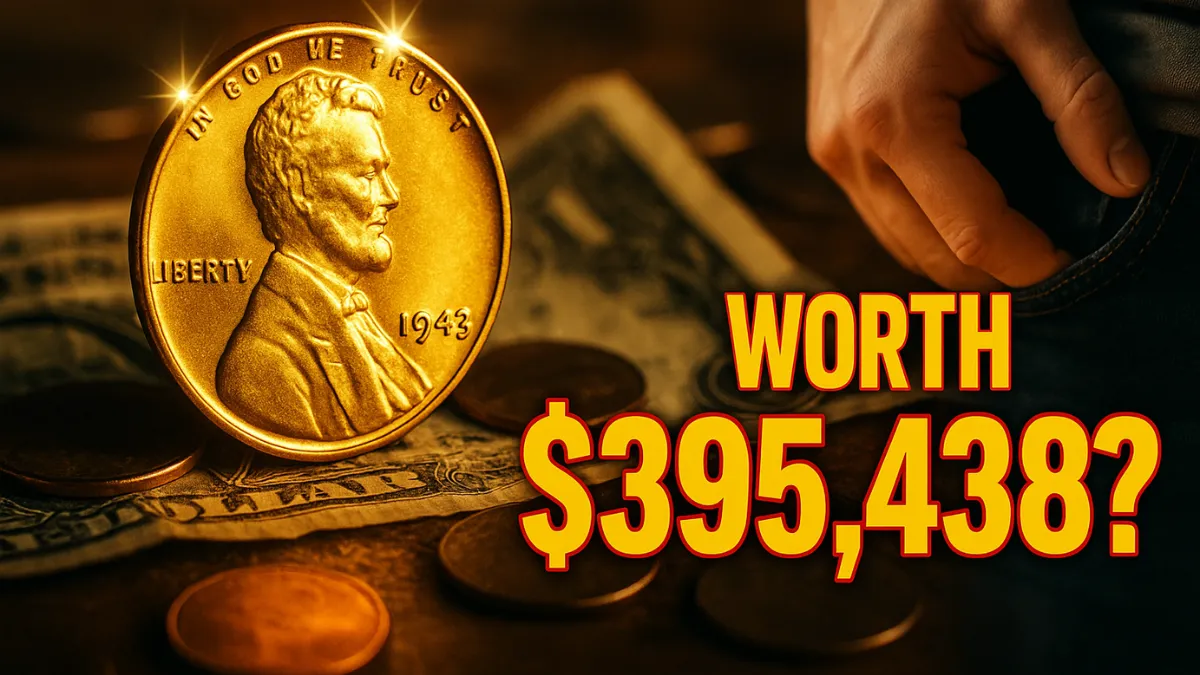This Ordinary-Looking Penny Could Be Worth $395,438—Here’s Why
At first glance, a penny might not seem like much. But there’s one extraordinary version of the Lincoln Wheat Penny that has sold for a jaw-dropping $395,438! This rare coin, which could still be hiding in everyday pocket change, is prized by collectors due to a unique minting mistake and its fascinating wartime background. Let’s explore what makes this penny so valuable and how you might be able to find one.
The 1943 Bronze Penny: A Rare Wartime Blunder
During World War II, the U.S. Mint made an important change: to conserve copper for the war effort, pennies struck in 1943 were made from zinc-coated steel. However, a few bronze coin blanks (leftover from 1942) mistakenly made it into the presses at the Philadelphia Mint.
These rare errors—known as the 1943 Bronze Lincoln Wheat Pennies—lack a mint mark and are believed to number only around 10 to 15 in existence. Their rarity and unusual origin have made them highly coveted by collectors.
How Valuable Is It?
The value of this penny is nothing short of astonishing. One of the best-preserved examples sold for $395,438 in a 2010 auction. Others have fetched even higher prices in private sales—some exceeding $1 million! Even coins that show signs of wear can sell for tens of thousands of dollars. Their worth is rooted in the fact that they were never meant to exist, making them an exciting and rare find.
How You Can Spot One
While finding one isn’t easy, it’s certainly possible. Here’s what to look for:
- Date and Mint Mark: The coin should say 1943 and have no mint mark (which means it was made in Philadelphia).
- Color and Material: Unlike the silvery steel versions, these rare pennies will have a coppery look. They’re made of bronze, so they won’t stick to a magnet.
- Be Aware of Fakes: Some steel coins are copper-coated to look like bronze, so it’s crucial to have any potential find authenticated by a professional grading service such as PCGS or NGC. Comparing with images from trusted numismatic sources can also help you make an early identification.
A Piece of History in Your Pocket
What makes the 1943 Bronze Penny even more intriguing is its historical background. Born out of a critical wartime shift in materials, these few error coins slipped through the cracks unnoticed. Some were only discovered many years later, which added to their mystique. They serve as tiny metal windows into a time when every resource counted, making them as meaningful as they are valuable.
Could One Be Hiding in Your Change?
It might sound like a dream, but there’s always a chance. Because some of these rare pennies were released into general circulation, they may still be found in old piggy banks, coin jars, or even loose change from a store.
Want to boost your odds? Search through bank rolls, inspect your penny collection, and don’t ignore that pile of coins in your drawer. If you spot a suspicious 1943 copper-colored penny, have it examined by a coin expert—it could turn out to be the find of a lifetime.
Quick Reference
| Feature | Details |
|---|---|
| Coin Type | 1943 Lincoln Wheat Penny |
| Minting Error | Struck in bronze instead of steel |
| Mint Mark | None (Philadelphia Mint) |
| Top Sale Price | $395,438 (sold in 2010) |
| Identification Tips | Copper color, non-magnetic |
This rare penny shows that even the smallest coins can carry incredible value. Thanks to its rare origin and compelling backstory, the 1943 Bronze Lincoln Wheat Penny remains one of the most sought-after U.S. coins. So go ahead—check your change. You never know when you might uncover a life-changing treasure!
FAQs
How do I know if my 1943 penny is made of bronze or steel?
To check, use a magnet. Steel pennies are magnetic, while bronze ones are not. A bronze penny will also have a rich copper color, while steel pennies appear silver or gray. If your 1943 penny is copper-colored and doesn’t stick to a magnet, it could be a rare bronze version—but get it authenticated to be sure.
Can a regular person really find one of these rare pennies?
Yes, it’s possible, though extremely rare. Since some 1943 Bronze Pennies were released into circulation, they could still be in old jars, coin rolls, or inherited collections. Many have been found years after they were minted, so it’s worth checking your change carefully.
Are there counterfeit 1943 Bronze Pennies?
Unfortunately, yes. Some fakes are made by copper-plating steel pennies or altering the dates on other coins. That’s why professional grading and authentication by trusted services like PCGS or NGC is crucial if you think you’ve found a genuine one.
What should I do if I think I’ve found a 1943 Bronze Penny?
First, don’t clean or alter the coin in any way. Use a magnet test and compare it with verified photos. If it seems promising, take it to a reputable coin dealer or submit it to a grading service for authentication. If real, it could be worth tens of thousands—or more!
